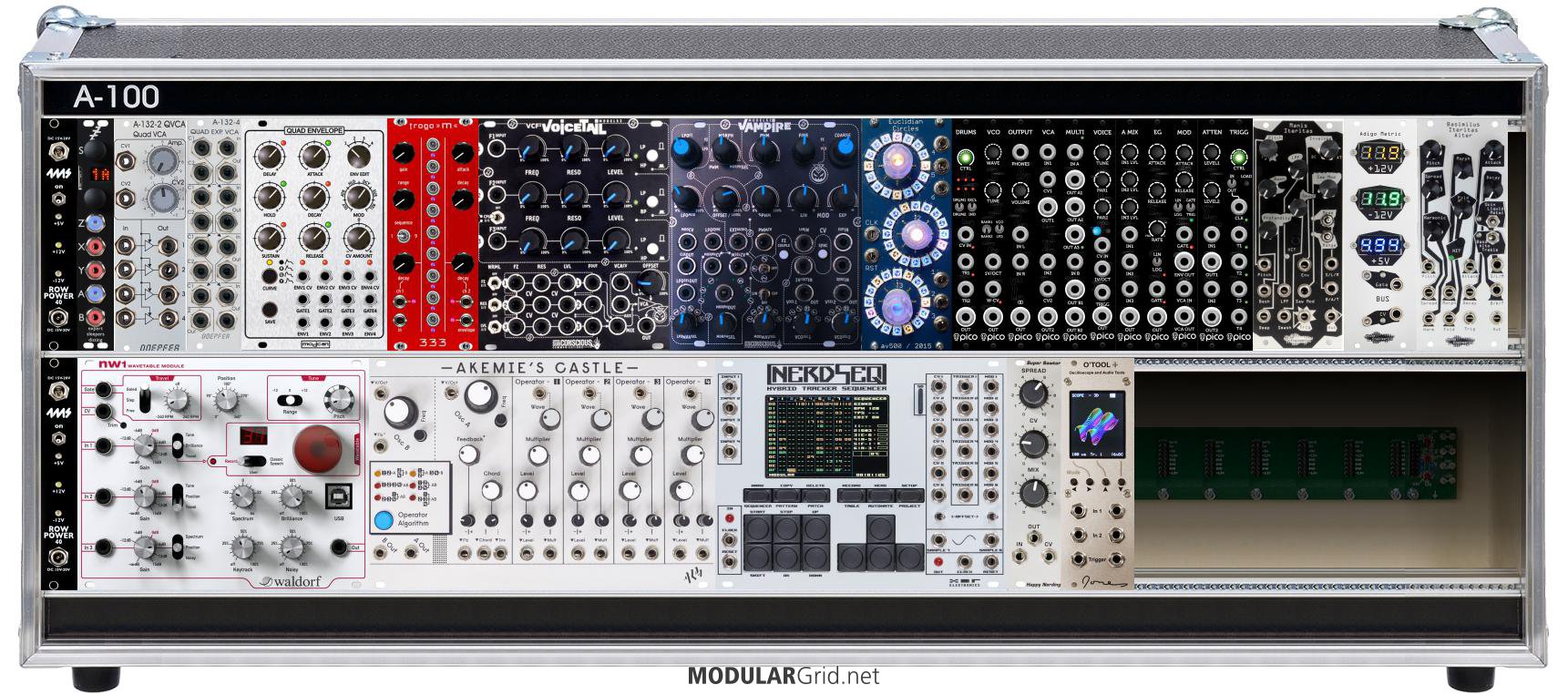The basic PPG signal chain is a digital wavetable oscillator into an analog VCF (lowpass) to an analog VCA, with analog control over the whole thing. Very simple. That right there would be more or less a PPG Wave Carrier, save that the bit depth/sample rate of a present-day wavetable oscillator would be a lot higher than the original, which was rather gritty and aliased like crazy at high frequencies (which, in truth, was an asset as you could work that aliasing into patches in interesting ways).
As for FM...that can be as complicated or as simple as you want. An Akemie's would work, or a couple of Doepfer's TZFM VCOs, or just combining basic sine VCOs with arrays of EGs and VCAs to build the operator chains yourself to get the classic Chowning methodology in analog. That can be a bitch to program, however. Plus, as Yamaha found, having some sort of filter after that generation section helps that sound out a lot.
The other 'got done a lot in digital' method is, of course, additive. But that's sort of nightmarish in analog: you'd need a sine VCO for each partial with the proper offsetting on each so that all of the VCOs track properly, then a VCA for each with its own DADSR (yes, you want a delayed envelope in all cases) to control the VCA amplitudes, with all VCAs summing into a mixer with individual level controls. On the other hand, doing additive this way allows a lot of inharmonic partial settings, possible phase-shifting of various partials...but also, a potential brain hemorrhage from trying to keep the whole mess programmed!


